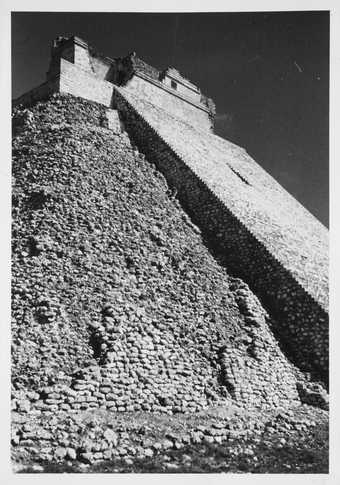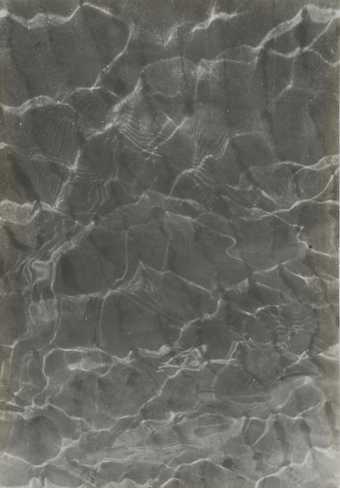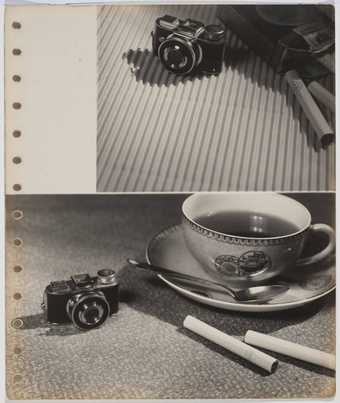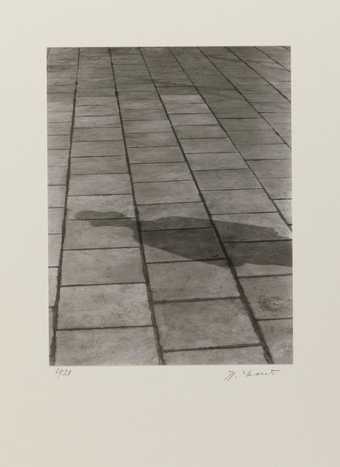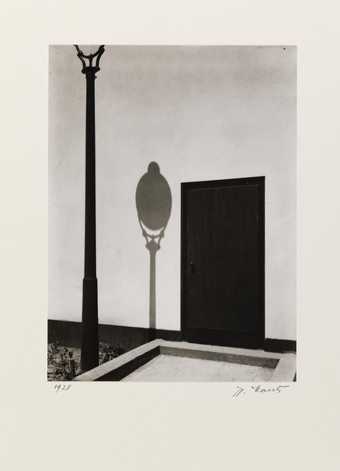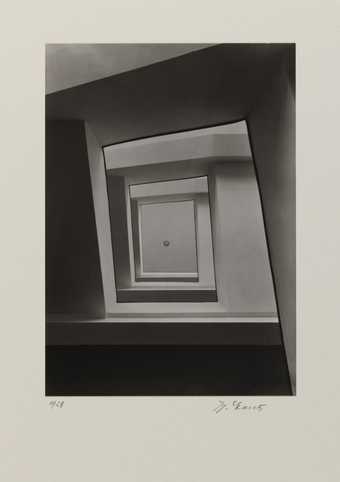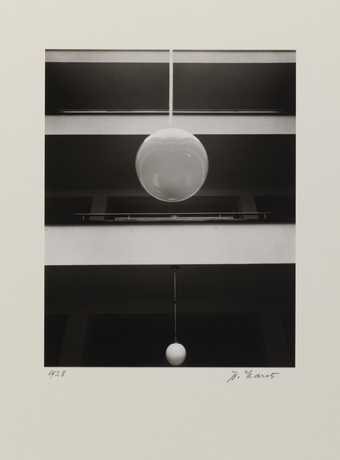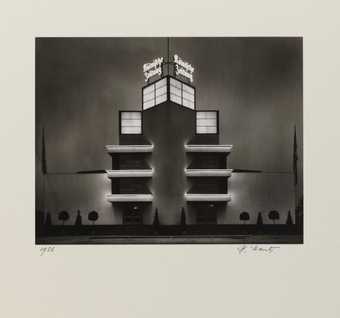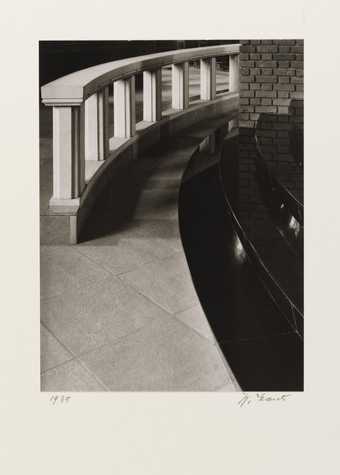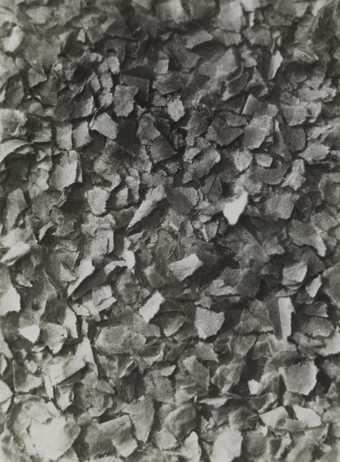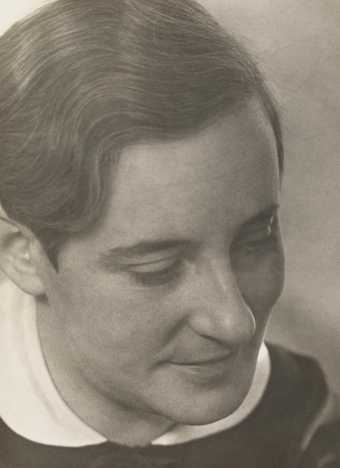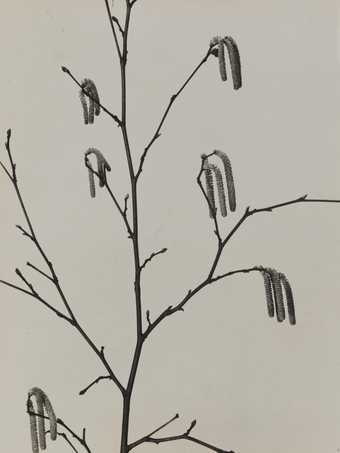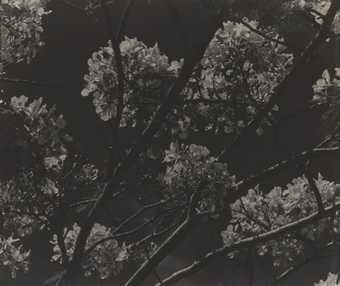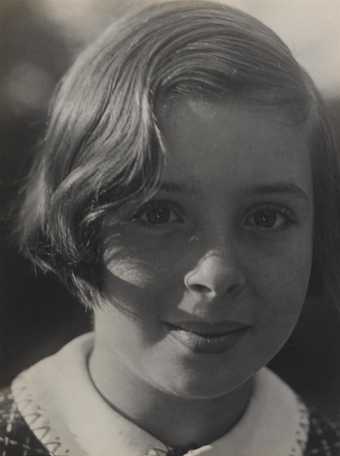
In Tate Modern
- Artist
- Aenne Biermann 1893–1933
- Original title
- Keramiktasse
- Medium
- Photograph, gelatin silver print on paper
- Dimensions
- Image: 125 × 170 mm
- Collection
- Tate
- Acquisition
- Purchased with funds provided by Pierre Brahm 2013
- Reference
- P80261
Summary
Ceramic Cup c.1929 shows an arrangement of ceramic crockery laid out on a table, photographed from above. The ceramic cup and saucer are the focus of the photograph and two other plates on the table are cropped by the composition. This technique of cropping or photographing objects from a distinctive angle is characteristic of ‘New Objectivity’ photography of the 1920s. It was only in the later part of her career that Biermann found stimulation in inanimate objects and when talking about her interest in representing this subject matter she explained: ‘the particularity and uniqueness of each form opened up endless possibilities. The clarity of a constructed form, taken out of its distracting surroundings, seemed to have the potential for compelling representation in photography’ (quoted in Eskildsen 1988, p.94). This is a vintage print made by the artist around the time she produced the image.
Biermann was one of the major proponents of the ‘New Objectivity’ photography movement that developed in Germany in the 1920s, a movement that embraced the mechanical ability of the camera to capture the real world in a clear, objective manner. She was influenced by artists working at the time, including Albert Renger-Patsch and August Sander, and by the end of the 1920s was exhibiting her work alongside them. During her seven-year career, which was cut short by her early death in 1933, Biermann produced a large portfolio of work, ranging from portraits (see, for example, Untitled (Self-Portrait) c.1931, Tate P80258) and photographs of plants and flowers (see, for example, Amaryllis 1928, Tate P80260) to images of inanimate objects such as Ceramic Cup.
Biermann started out photographing her young children in the early 1920s and by 1926 her interest had developed into a considered photographic practice. In 1928 she met the geologist Rudolf Hundt who subsequently asked her to work on several commissions photographing rocks and minerals. According to Biermann it was these early commissions that marked the beginning of her serious photographic work (Eskildsen 1988, p.11). Biermann gained public recognition in late 1928 when the German art historian and photographer Franz Roh published an article referring to her plant photographs. Following this, her work was shown in many of the major international photographic exhibitions of the late 1920s and early 1930s, such as the Fotografie der Gegenwart (Contemporary Photography Exhibition) at the Folkwang Museum, Essen, in 1929. In these exhibitions Biermann was shown alongside other female photographers who worked in Germany at the same time, such as Lucia Moholy.
Further reading
Ute Eskildsen, Aenne Biermann: Photographs 1925–33, London 1988.
Shoair Mavlian
August 2011
Does this text contain inaccurate information or language that you feel we should improve or change? We would like to hear from you.
Display caption
Keramiktasse shows an arrangement of ceramic crockery laid out on a table, photographed from above. The ceramic cup and saucer are the focus of the photograph and two other plates on the table are cropped by the composition. Biermann was one of the major proponents of the German Neue Sachlichkeit (‘New Objectivity’) photography movement that developed in the 1920s, embracing the mechanical ability of the camera to capture the real world in a clear, objective manner. She was influenced by other artists working at the time, including Albert Renger-Patsch (whose work hangs nearby) and August Sander.
Gallery label, January 2022
Does this text contain inaccurate information or language that you feel we should improve or change? We would like to hear from you.
Explore
You might like
-
Josef Albers Untitled (Maya Temple, Chichen Itza, Mexico)
after 1935 -
Josef Albers Light Reflections on Waves, Ascona
c.1931–3 -
Ryukichi Shibuya Untitled (Cigarettes, camera & coffee)
c.1936 -
Wolfgang Suschitzky Lyons Corner House, Tottenham Court Road, London
1934, later print -
Werner Mantz Advertisement for pavement stones, Cologne 1928
1928, printed 1977 -
Werner Mantz Detail of Kalkerfeld settlement, Cologne 1928
1928, printed 1977 -
Werner Mantz Staircase Ursuliner Lyzeum, Cologne 1928
1928, printed 1977 -
Werner Mantz Sinn-Department store, Gelsenkirchen 1928
1928, printed 1977 -
Werner Mantz Kölnische Zeitung, Pressa, Cologne 1928
1928, printed 1977 -
Werner Mantz Communion bench, Kreneheide 1935
1935, printed 1977 -
Herbert Schurmann Untitled (Sheets of Paper)
c.1932 -
Aenne Biermann Untitled (Self Portrait)
c.1931 -
Aenne Biermann Hazelnut Catkins
c.1931 -
Aenne Biermann Cherry Plantation
1930 -
Aenne Biermann My Child
1931

